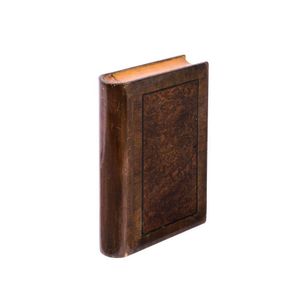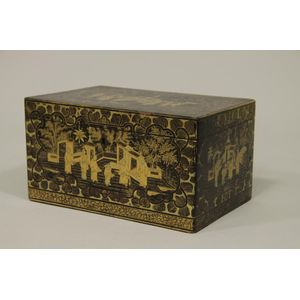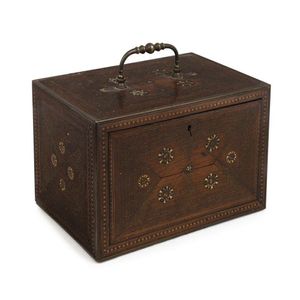Anglo-Indian Inlaid Spice Box with Seven Drawers
You must be a subscriber, and be logged in to view price and dealer details.
Subscribe Now to view actual auction price for this item
When you subscribe, you have the option of setting the currency in which to display prices to $Au, $US, $NZ or Stg.
- Ebony - Ebony is a close grained timber, black in colour. It has a fine texture which can be polished to a high gloss, making it suitable for venereering, inlay and stringing and its use as solid timber is resticted to small decorative items and ornamental decoration, such as chess pieces and musical instrument parts. The term "ebonised" means "faux ebony", timber that has been darkened during the polishing process to resemble ebony.
- Padouk - Padouk is a richly coloured dense and heavy timber, varying in colour from dark crimson to brown and red, found in Africa and Asia. It was often used as a furniture timber in India, for making furniture in the Anglo-Indian style. Padouk was also imported into England and France in small quantities in the 18th and 19th centuries, and occasionally English and French examples of furniture made of this timber come onto the market.
- Sandalwood - Sandalwood is a heavy, yellow coloured and very fine-grained timber, which has a fragrance which lasts for many decades, and acts as a deterent to moths and insects.
In the British colonial era, sandalwood was imported into Britain from India, and the wood also used within India for the manufacture of Anglo-Indian furniture.
Becasue it does not have a distinct grain pattern, sandalwood was not used for the exterior surfaces of furniture, but was put to use for drawer and box linings, where the aroma was noticeable one the object was opened. it was also used to manufacture small objects (treen).
Nowadays sandalwood is commercially grown with Australia the largest producer. As well as producing timber, oil is extracted for use in the manufacture of perfumes.
This item has been included into following indexes:
Visually similar items

Ridley, Rev. W. M. Kamilaroi, Dippil, and Turrubul: Languages Spoken By Australian Aborigines, Thomas Richards, Government Printers, Phillip-Street, Sydney, 1866

A book box, burl timber, maple, pine and cedar, late 19th century, 24 cm high

A mid 19th century gilt leather stationary box, c1850, 13 x 15 cm

A Chinese export lacquer tea caddy of rectangular form with Chinoiserie decoration and chased zinc interior. Height 14 cm. Width 26 cm. Depth 17.5 cm
